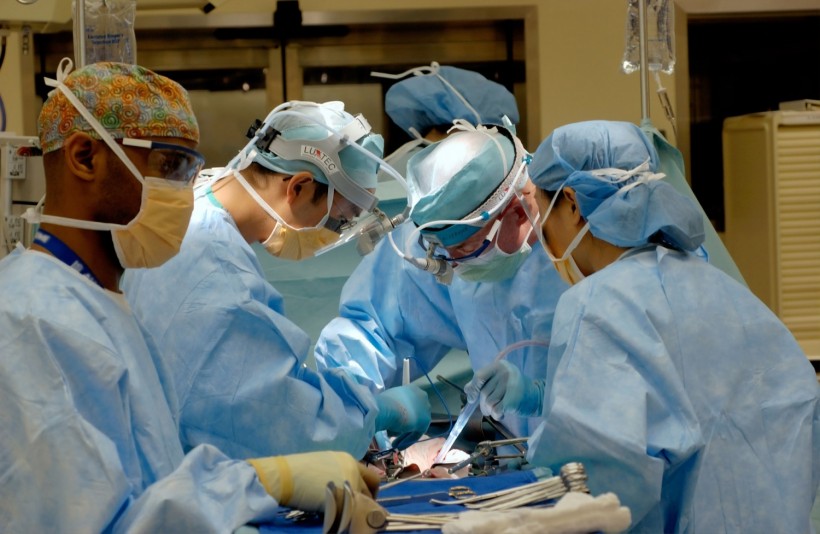One of the most well-known cosmetic surgical procedures is liposuction, a procedure for reducing extra fat deposits. For post-pregnancy moms whose bodies might not look like they did before pregnancy, liposuction offerings, such as those offered by Dr.Neinstein, can greatly encourage body positivity. Often, these moms find themselves struggling with excess fat in areas such as their thighs and tummy. Despite the best efforts of many, these stubborn fat pockets can be nearly impossible to remove without a little help. For this reason, many post-partum moms have found that a better physique and less time spent at the gym make liposuction reality worthwhile. But moms aren't the only patients who benefit. Rather, liposuction has proven advantageous for anyone struggling with stubborn fat deposits.
Although liposuction has always been a safe and effective surgery, plastic surgeons' technologies and equipment have significantly advanced over the last decade. But, before diving into today's improvements, we look at the history of the procedure in greater detail below.
The origins of liposuction
It was a French surgeon, Dr. Charles Dujarier, that first attempted liposuction in 1926. In this procedure, a dancer and model had fat removed from her knees. Although unsuccessful, this first attempt paved the way for more significant advancements in the 1970s.
It was nearly 50 years later that surgeons evolved the liposuction procedure with the use of curettes to remove pre-liposuction fat. Unfortunately, a successful outcome was far from a guarantee under this approach. That is, until 1974 when Dr. Arpad and Dr. Giorgi Fischer created a new device, the cannula. The cannula is a device with a hollow inside that allows doctors to remove fat through suction techniques 360 degrees around its entry point while simultaneously avoiding blood arteries. It was through this tool that present-day liposuction was born.
The next major innovation came in 1978, introducing the "wet technique" for liposuction. With this evolution, surgeons inject a saline solution (salt water) into the treatment area before the operation. The wet method proved to help lessen the bleeding and make the fat removal process even simpler.
The next innovation introduced the world to Ultrasonic Assisted Liposuction (UAL) and Power Assisted Liposuction (PAL). These newer methods further improved the process by using ultrasonic energy to improve fat removal.
Although these years proved pivotal for the modern liposuction process, their evolution is far from over. As the last decade has shown, improvements to the effectiveness and safety of the liposuction process are still a major focus for surgeons across the globe.
Tailoring the process
As previously mentioned, the modern liposuction process looks to a device called a cannula. However, unlike the first cannula devices, which surgeons invented with the primary goal of removing fat, today's cannulas come in various shapes and sizes. These evolutions ensure that the entire liposuction surgery is less invasive and that the surgeon can be that much more exact with his fat removal hand method.
The benefit is that with more tools, patients can receive more custom surgery tailored to their treatment area, aesthetic/cosmetic goals, and other important factors. Therefore, patients can now experience the best liposuction experience possible.
More realistic appearances
A second evolution in the past decade is the guarantee of more realistic results. As liposuction techniques improve, patients benefit from more precise body-shaping ultrasonic technologies. These devices use ultrasonic waves to break up fat without damaging the surrounding skin. Surgeons can then focus on "selecting" the cells they want to remove, thereby sculpting the contour or the patient, rather than simply removing fat.
As a result, high-definition liposuction, liposelection for selecting specific fat cells, liposculpture for muscle tone and shapeliness, mini lipo for smaller areas of unwanted fat, and tickle lipo, liposuction with intrasonic tools are now becoming popular treatments.
Less pain
New liposuction techniques can now give patients the amazing results they were hoping for, with less pain and quicker recovery times. These realities are possible by doing away with the demand for general anesthesia.
Traditionally, Lidocaine and epinephrine, diluted local anesthetic solutions, were used in a liposuction procedure. Doctors would inject these anesthetics in significant volume into the fat beneath the skin to perform liposuction using the tumescent technique. The technique, believed to be safer than older methods, also offers benefits, including minimized recovery time, optimal results, and reduced pain.
A focus on improved safety
Today, surgeons and researchers continue to improve the safety and longevity of liposuction procedures. In a recent study, Dr. Neinstein, the founder of Neinstein Plastic Surgery, completed a novel surgical safety study to help reduce blood loss and blood clots in liposuction surgeries. In this study, the Neinstein team concluded that combining intravenous tranexamic acid and subcutaneous heparin further improves safety with an expedited healing process and less blood loss. For patients, liposuction is now a procedure with fewer risks than ever before, making it more accessible to the population at large.
* This is a contributed article and this content does not necessarily represent the views of sciencetimes.com











!['Cosmic Glitch' in Einstein's Theory of General Relativity Could Be Explained in This New Scientific Tweak [Study]](https://1721181113.rsc.cdn77.org/data/thumbs/full/53435/258/146/50/40/cosmic-glitch-in-einsteins-theory-of-general-relativity-could-be-explained-in-this-new-scientific-tweak-study.jpeg)



